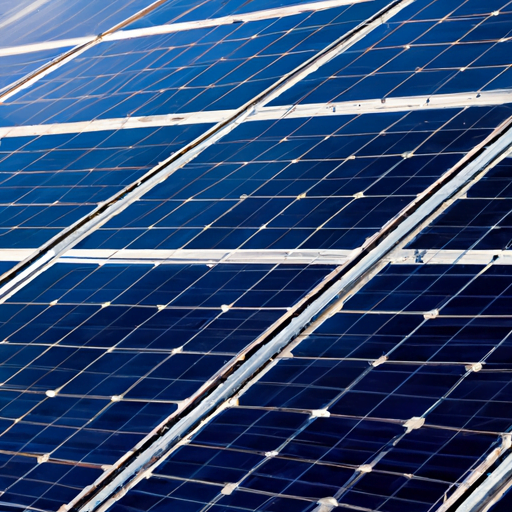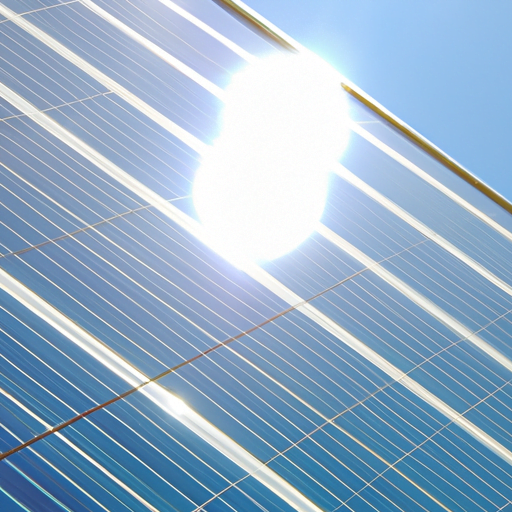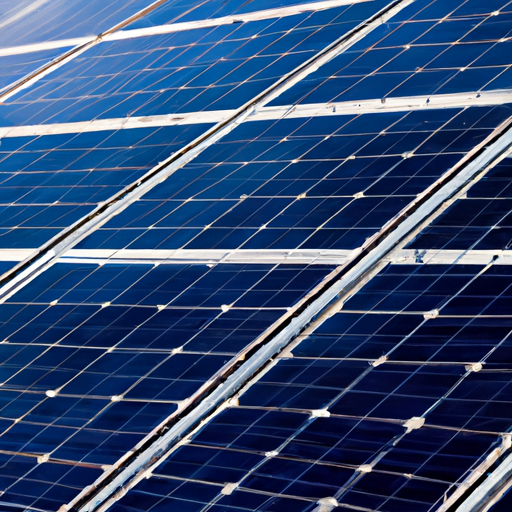So, you’re interested in off-grid living and want to know how many solar panels you would need to generate 1000 kWh per month? Well, you’ve come to the right place! Figuring out the number of solar panels you need can seem a bit overwhelming, but don’t worry, I’ll walk you through it step by step. By the end of this article, you’ll have a clear understanding of how to calculate the number of solar panels needed to meet your energy needs.
To calculate the number of solar panels required for 1000 kWh per month, you need to consider a few factors. First, you’ll need to determine the average daily solar radiation in your location. This information can usually be found online or by contacting your local energy provider. Next, you’ll need to understand the efficiency rating of the solar panels you plan to use. This rating represents how much energy the panel can convert from the sun into usable electricity. Lastly, you’ll need to account for any losses in the system, such as inverter inefficiencies or shading on the panels.
Once you have these figures, you can use a simple equation to calculate the number of solar panels needed. Remember, this calculation will give you an estimate, and it’s always a good idea to consult with a professional for an accurate assessment. So, stay tuned for the next part of the article, where we’ll delve deeper into the specific steps and calculations involved in determining the number of solar panels you need for 1000 kWh per month.

Factors to Consider
When determining the number of solar panels needed to generate 1000 kWh per month, there are several factors that need to be taken into consideration. These factors include energy consumption, location and sunlight, efficiency of solar panels, calculating energy consumption, determining solar panel capacity, calculating the number of solar panels, accounting for battery storage, considering space constraints, choosing the solar panel type, evaluating financial considerations, and consulting with professionals.
Energy Consumption
Before calculating the number of solar panels required, it is important to have a clear understanding of your energy consumption. Assess how many kilowatt-hours (kWh) your household consumes on a monthly basis. This can be determined by looking at your electricity bills over the course of several months and taking an average. In this case, we are assuming a consumption of 1000 kWh per month.
Location and Sunlight
The amount of sunlight your location receives is an important factor in determining solar panel efficiency. Consider the geographical location, climate, and weather patterns of your area. Areas with ample sunlight are ideal for solar energy generation, while those with frequent cloud cover or limited sunlight may require additional panels to compensate for the lower energy production.
Efficiency of Solar Panels
Solar panel efficiency refers to the percentage of sunlight that is converted into usable electricity. Higher efficiency panels will produce more energy per square meter than lower efficiency panels. It is important to choose solar panels with high efficiency to maximize energy generation and minimize the number of panels needed.
Calculating Energy Consumption
To determine the number of solar panels needed, you must first calculate your monthly kWh requirement.
Determine Monthly kWh Requirement
As mentioned earlier, in this case, we are assuming a monthly consumption of 1000 kWh. This means that your solar panel system needs to generate at least 1000 kWh of electricity per month.
Account for Seasonal Variations
Keep in mind that energy consumption can vary throughout the year. In some months, your consumption may be higher due to increased energy usage for heating or cooling. Consider these seasonal variations when calculating your average monthly kWh requirement.
Determining Solar Panel Capacity
Once you have calculated your monthly kWh requirement, you can determine the capacity of the solar panels needed to meet this demand.
Panel Wattage and Efficiency
Consider the wattage and efficiency of the solar panels you are considering. Higher wattage panels are capable of generating more electricity, while higher efficiency panels can generate more energy from the same amount of sunlight.
Consider Inverter Efficiency
Inverters are an essential component of a solar panel system as they convert the electricity generated by the panels into a form that can be used by your home appliances. Take into account the efficiency of the inverters you are using, as this can affect the overall energy generation.
Account for Panel Degradation
Over time, solar panels may lose efficiency due to factors such as dirt buildup and aging. It is important to account for this degradation when determining the number of panels needed. Consider a margin of error and add a few extra panels to compensate for any potential decrease in efficiency.
Calculating Number of Solar Panels
Once you have determined the capacity of the solar panels needed, you can calculate the actual number of panels required.
Divide Monthly kWh Requirement by Daily Generation
To find the number of panels needed, divide your monthly kWh requirement by the daily energy generation of each panel. This will give you an estimate of the number of panels required to meet your energy consumption.
Factor in Peak Sun Hours
Peak sun hours refer to the number of hours in a day when sunlight is strong enough for optimal energy generation. Taking into account the average peak sun hours in your location, adjust the number of panels accordingly to ensure optimum energy production.

Accounting for Battery Storage
If you are considering storing excess energy for later use, you will need to account for the additional energy storage requirements. Batteries can help store energy generated during the day for use during the night or on cloudy days. Determine the capacity and number of batteries needed based on your energy storage requirements.
Considering Space Constraints
Consider the available space on your roof or ground for installing the solar panels.
Determine Available Roof or Ground Space
Calculate the area available for installing solar panels. Ensure that the space is unobstructed and receives ample sunlight throughout the day. If you have limited space, you may need more efficient panels or consider alternative mounting options such as solar carports or ground-mounted systems.
Account for Panel Orientation and Tilt
The orientation and tilt of the solar panels can affect their energy generation. Panels should ideally be facing south in the northern hemisphere or north in the southern hemisphere to maximize exposure to sunlight. The tilt angle should be adjusted based on the latitude of your location.
Choosing Solar Panel Type
There are several types of solar panels available in the market, including monocrystalline, polycrystalline, and thin-film panels. Each type has its own advantages and disadvantages.
Monocrystalline
Monocrystalline panels are made from a single crystal structure and are known for their high efficiency and sleek appearance. They tend to be more expensive but offer better performance in limited space.
Polycrystalline
Polycrystalline panels are made from multiple crystal structures and are slightly less efficient than monocrystalline panels. However, they are more affordable and still provide excellent energy generation.
Thin-Film
Thin-film panels are made by depositing a thin layer of photovoltaic material onto a substrate. They are less efficient compared to crystalline panels but can be more flexible and lightweight, making them suitable for certain applications.
Consider your specific requirements and budget when choosing the type of solar panels for your system.
Evaluating Financial Considerations
When determining the number of solar panels, it is important to consider the financial aspects of your solar panel installation.
Cost of Solar Panels
Calculate the cost of the solar panels and the installation to determine the financial investment required. Consider any available incentives or tax credits that can reduce the overall cost.
Return on Investment (ROI)
Estimate the return on investment of your solar panel system by calculating the energy savings over time. This will help determine the payback period and the financial benefit of investing in solar panels.
Consulting with Professionals
It is always beneficial to seek advice from solar panel installers or professionals in the field. They can assist you in determining the number of panels required based on your specific needs and location. Additionally, consider getting a professional energy audit to identify areas where energy efficiency improvements can be made. This can help optimize your energy consumption and reduce the number of panels needed.
Conclusion
Calculating the number of solar panels required to generate 1000 kWh per month involves considering factors such as energy consumption, location, panel efficiency, and storage requirements. By following the steps outlined in this article and consulting with professionals, you can make an informed decision about the number and type of solar panels needed for your specific needs. Remember to also consider financial considerations and evaluate the return on investment to ensure a cost-effective and sustainable solution for your energy needs.




